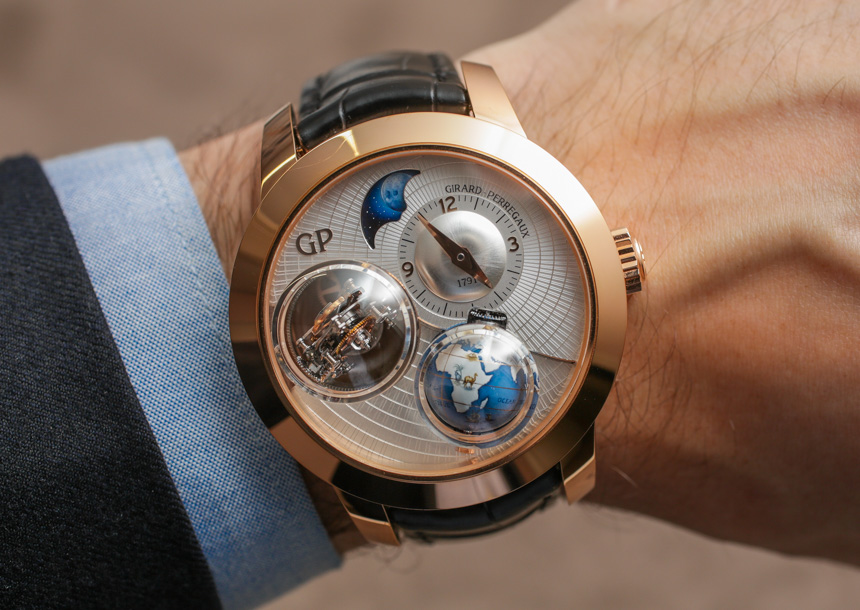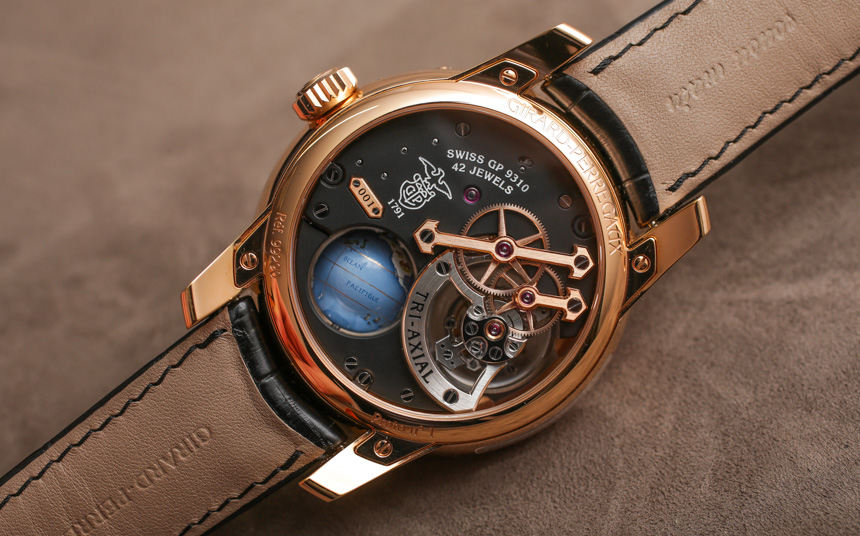Girard-Perregaux Tri-Axial Planetarium Watch Hands-On

Girard-Perregaux describes the small, hand-painted globe (so large it needs a bubble in the sapphire crystal) as being a miniature representation of a map from the 17th–18th century. That's a pretty big spread of time in the world of cartography, but I think even the brand can agree that a timepiece such as the Girard-Perregaux Tri-Axial Planetarium would have felt very much at home back then.


Imagine a time when the tourbillon itself was patented by Mr. Breguet back at around the end of the 18th century. Now imagine a tourbillon that spins on not one axis, or two, but three. The Girard-Perregaux Tri-Axial Tourbillon is indeed one of the few triple axis tourbillon watches out there. The very first of these species I recall learning about was the Triple Axis Tourbillon from Thomas Prescher. A triple axis tourbillon is extremely complicated to engineer, and a huge endurance and patience challenge to assemble. These watches are extremely rare because their expense to make and cost to buy ensure production numbers are low. No, the three axis points of spinning for the tourbillon do not add any performance value – no more than the first or second axis points.
Buy Gurard-perregaux from Dukandar.com
Comments
Post a Comment